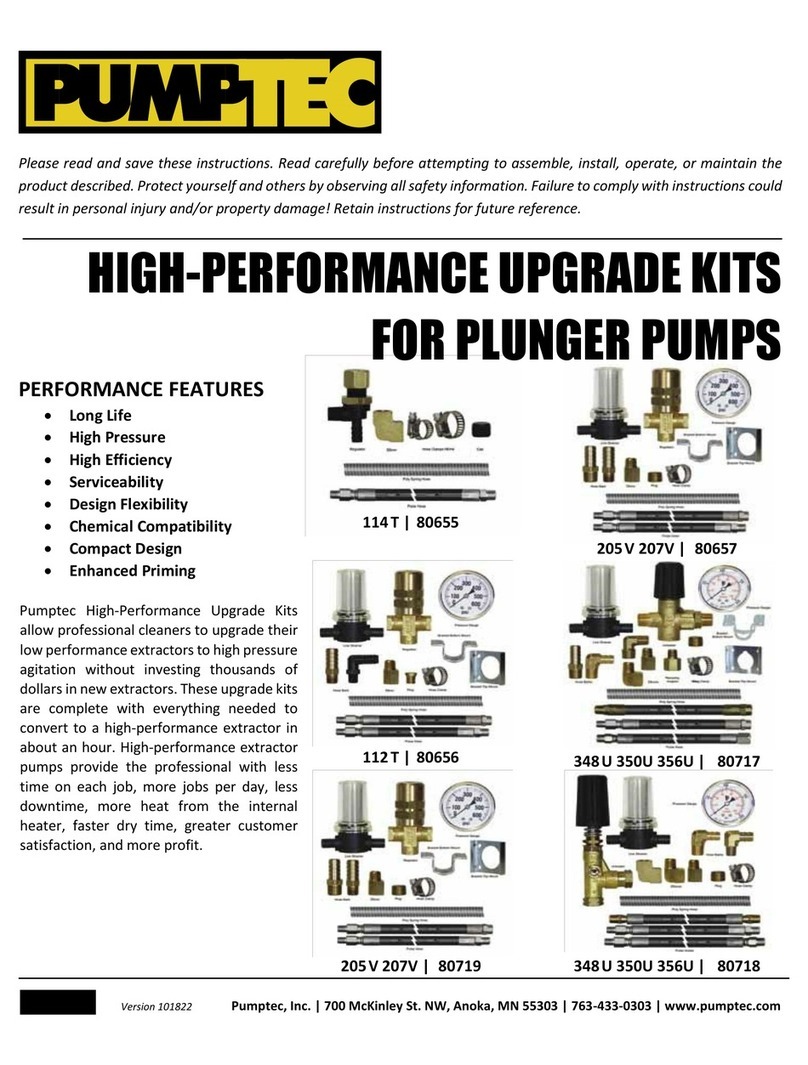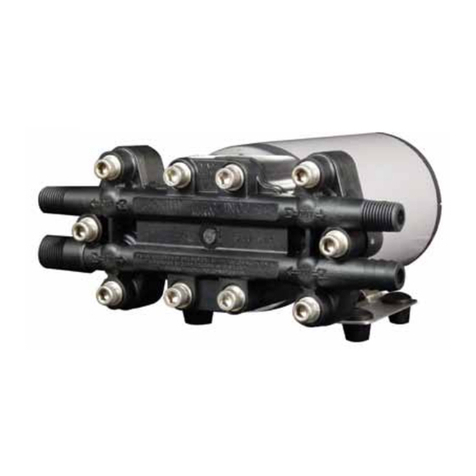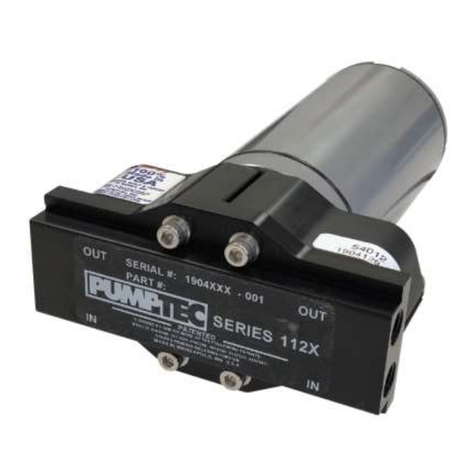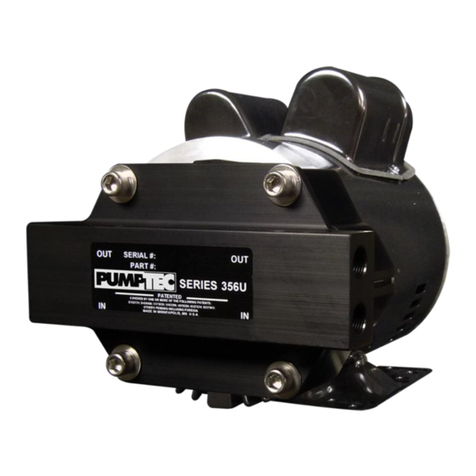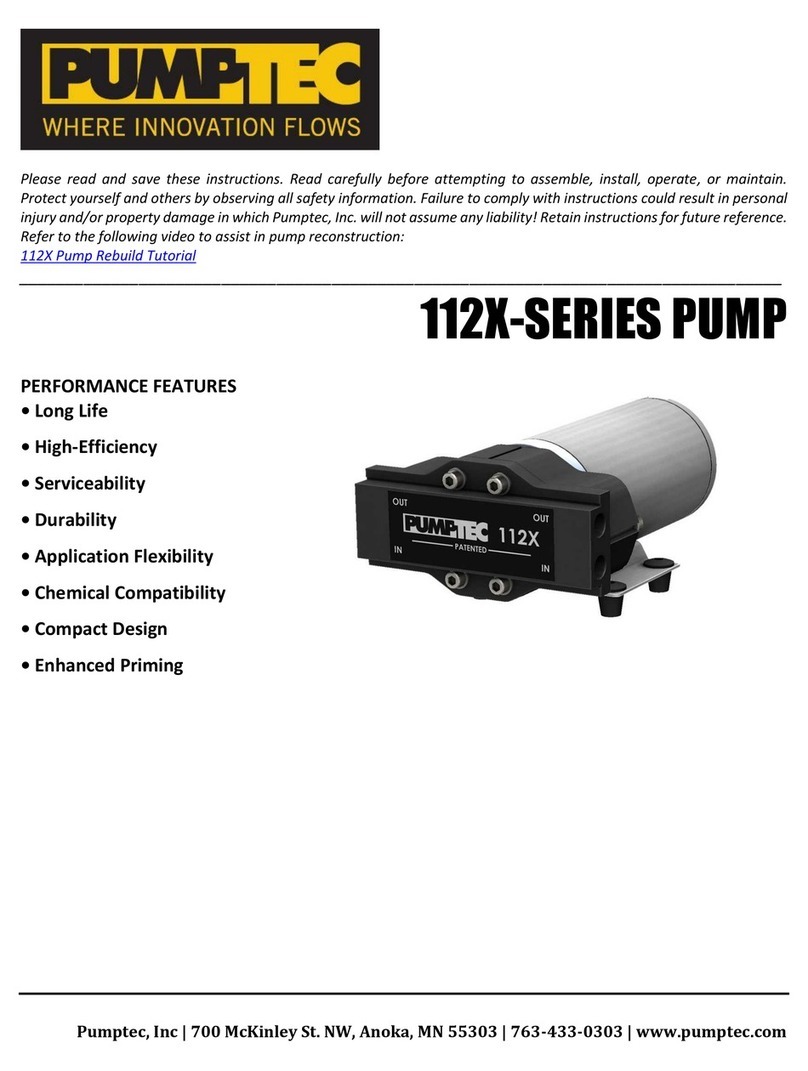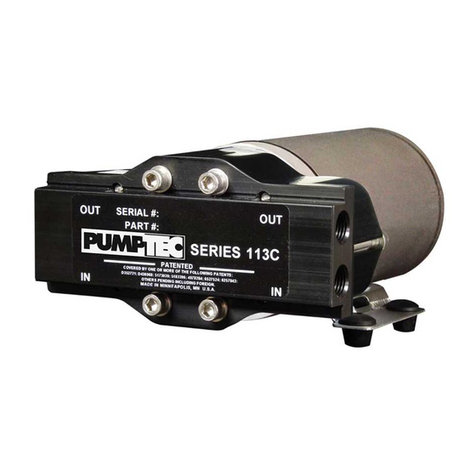the unfamiliar or untrained eye. REVIEW THIS CHECKLIST
BEFORE OPERATION OF ANY SYSTEM. Remember, no two
systems are alike so there can be no ONE best way to setup a
system. All factors must be carefully considered.
INLET SUPPLY should exceed the maximum flow being
delivered by the pump to assure proper performance.
•Open inlet shut-off valve and turn on water supply to avoid
starving the pump. DO NOT RUN PUMP DRY.
•Avoid closed loop systems especially with high temperature,
ultra-high pressure, or large flows. Conditions vary with
regulating/unloader valve.
•When using an inlet supply reservoir, size it to provide
adequate liquid to accommodate the maximum output of the
pump, generally a minimum of 6-10 times the GPM. However,
a combination of system factors can change this requirement.
INLET LINE SIZE should be adequate to avoid starving the
pump.
•Line size must be a minimum of one size larger than the pump
inlet fitting. Avoid tees, 90-degree elbows, or valves in the
inlet line of the pump to reduce the risk of flow restriction and
CAVITATION.
•The line MUST be a FLEXIBLE hose, NOT a rigid pipe, and
reinforced on SUCTION systems to avoid collapsing.
•The simpler the inlet plumbing the less potential for
problems. Keep the length to a minimum, the number of
elbows and joints to a minimum (ideally no elbows) and the
inlet accessories to a minimum.
•Use pipe sealant to assure airtight, positive sealing pipe joints.
INLET PRESSURE should fall within the specifications of the
pump.
•High RPM, high temperatures, low vapor pressures or high
viscosity may increase acceleration loss of liquids.
•Optimum pump performance is obtained with +20 PSI (1.4
BAR) inlet pressure. With adequate inlet plumbing, most
pumps will perform with flooded suction.
•After prolonged storage, the pump should be purged of air to
facilitate priming. Disconnect the discharge port to allow
liquid to pass through pump and measure flow.
BYPASS TO INLET –care should be exercised when deciding
the method of bypass from control valves. See Misting on pages
4 and 5.
•It is recommended that the bypass be directed to a baffled
reservoir tank, with at least one baffle between the bypass
line and the inlet line to the pump.
•Although not recommended, bypass liquid may be returned
to the inlet line of the pump if the system is properly designed
to protect your pump.
•A low-pressure, flexible hose should be used from the bypass
connection to the inlet of the pump.
•Caution should be exercised to avoid under sizing the bypass
hose diameter and length.
•Check the pressure in the bypass line to avoid over-
pressurizing.
USING CHEMICALS
Chemicals can be mixed into the fluid, and it is necessary to
understand whether these chemicals will damage the pump or
other system components. Another way to put chemicals into
the fluid is with a downstream injector.
An injector works as a result of the difference in pressure
between the inlet side of injector and discharge side. In most
cases, the pressure on the discharge side cannot exceed 1/2 of
the inlet pressure. For example, 1000 PSI into an injector should
allow up to 500-600 PSI spray pressure on discharge side. There
are dual-function nozzles that permit high pressure, chemical
free rinse and low pressure, chemical spray. These are
convenient for the operator and will not harm a properly
designed system. The advantages of an injector are:
-Fewer items come in contact with chemical
-Chemical injection rate can be controlled
-Applying chemicals at lower pressure increases chemical
use efficiency
HEATING FLUID
Pumps may sometimes be used with downstream heaters and
precautions need to be taken to protect the system and
persons from harm. Refer to the skilled staff at the equipment
manufacturer for guidance and proper system care. Please be
aware that heated water expands, and additional pressure
release safety devices may be required.
SYSTEM DESIGN
A pump is the heart of every system and proper selection is
critical to equipment functionality and durability. If a
pumping set with excess flow is chosen, then energy and fluid
is wasted. If excess pressure results, then equipment
effectiveness can decrease as well as pump life.

